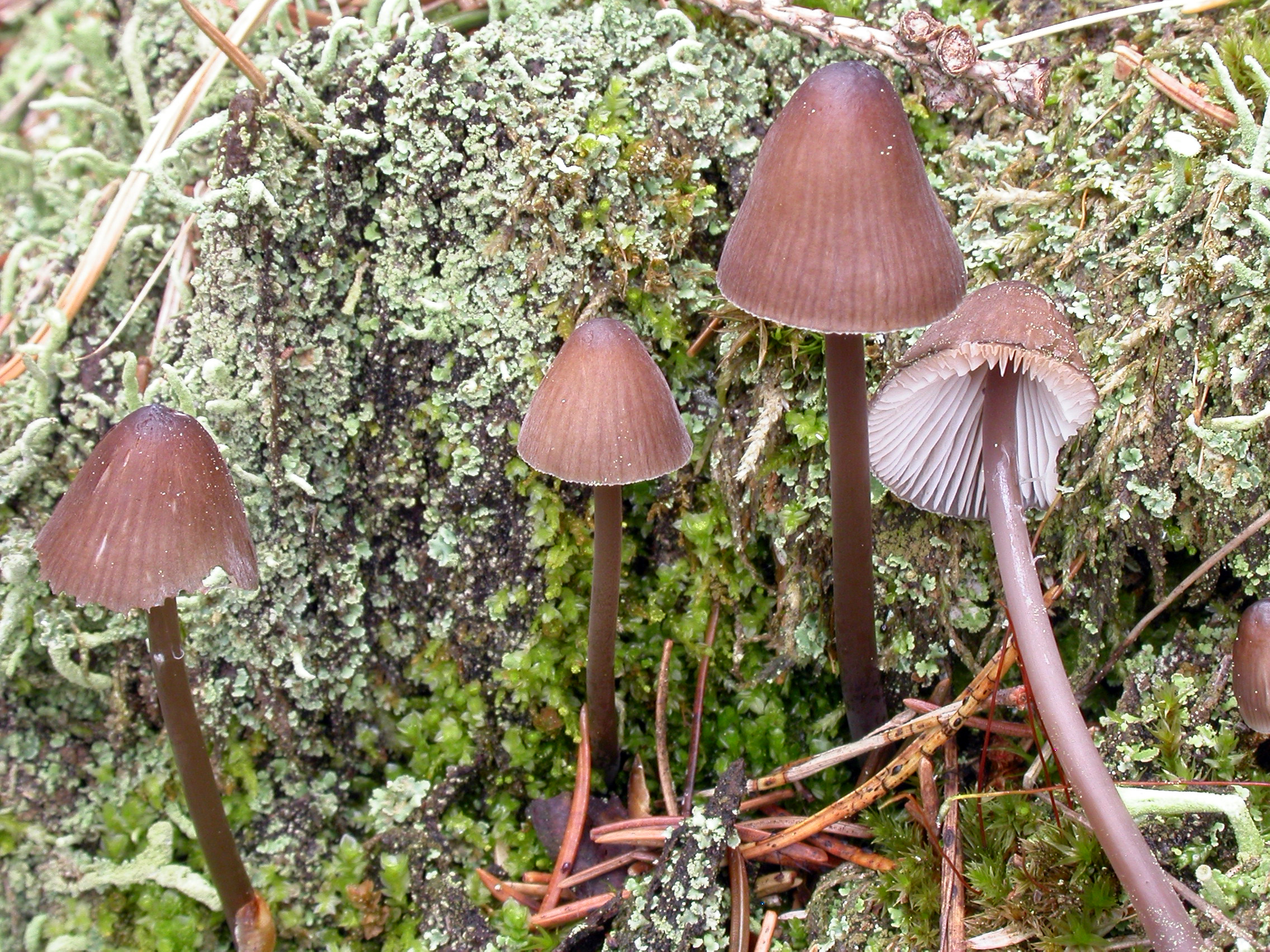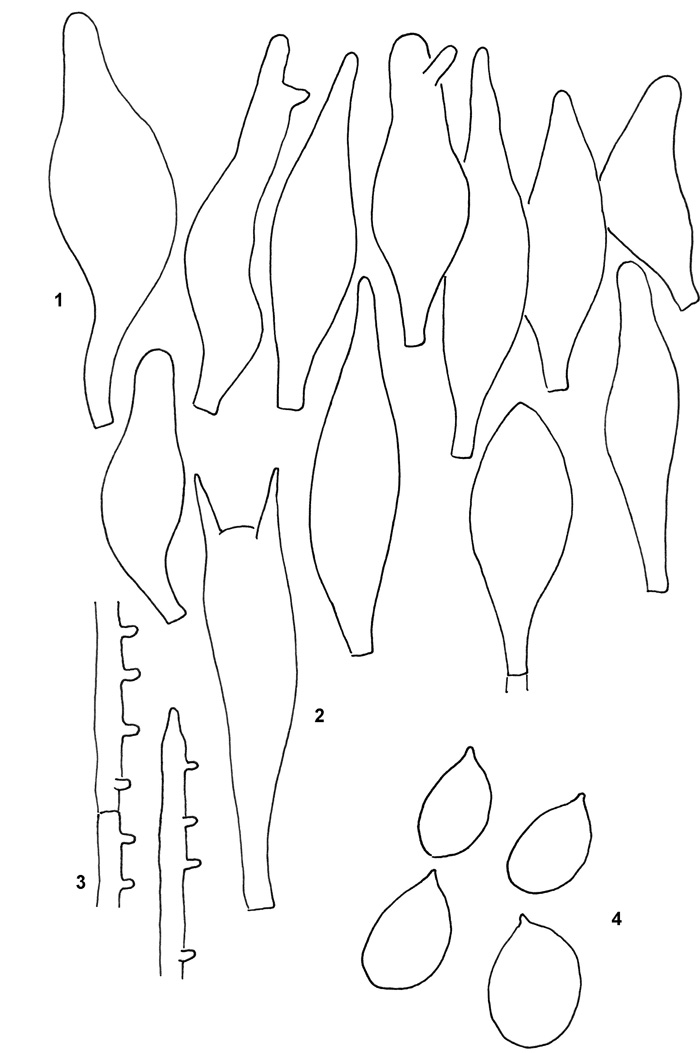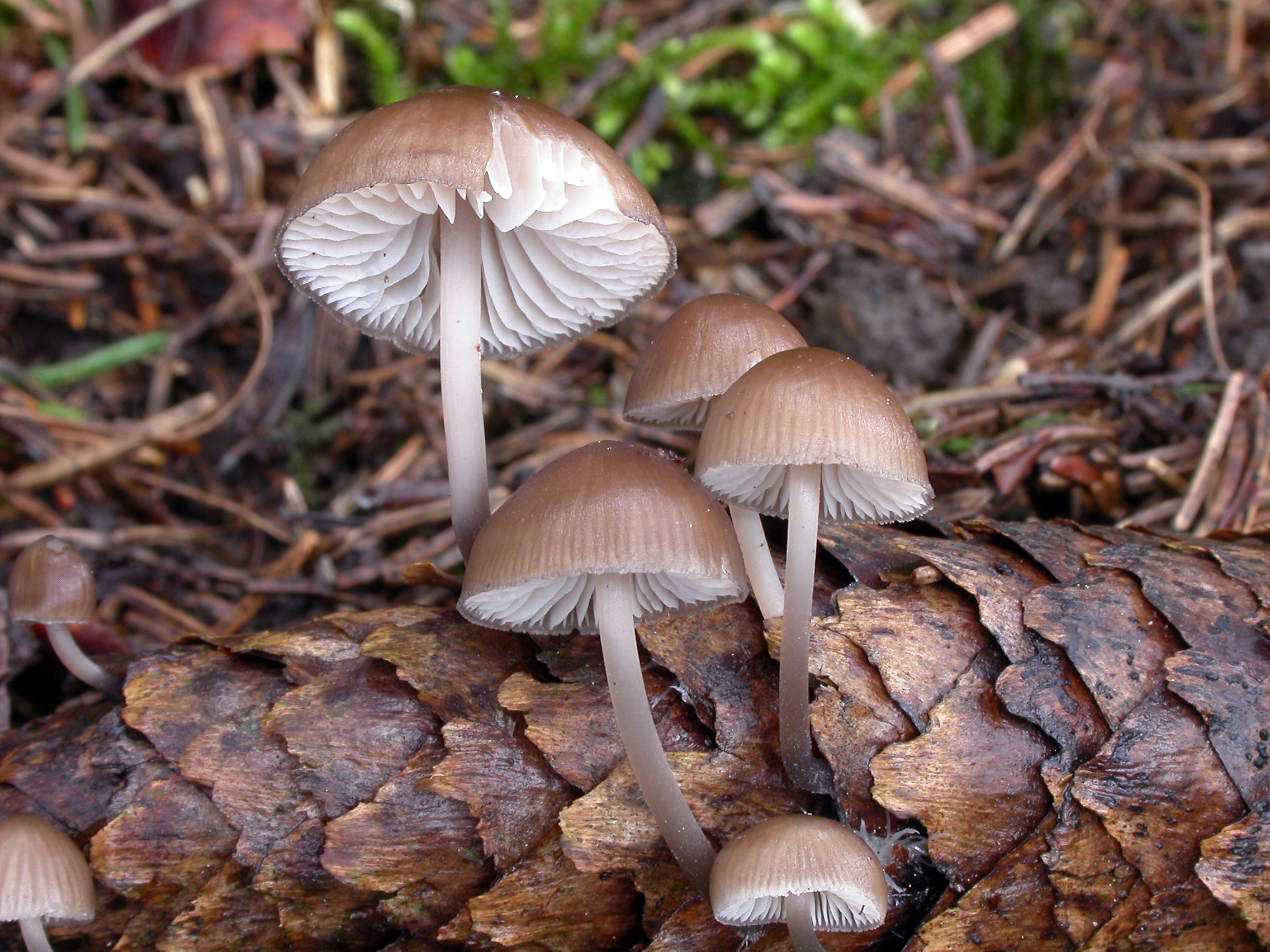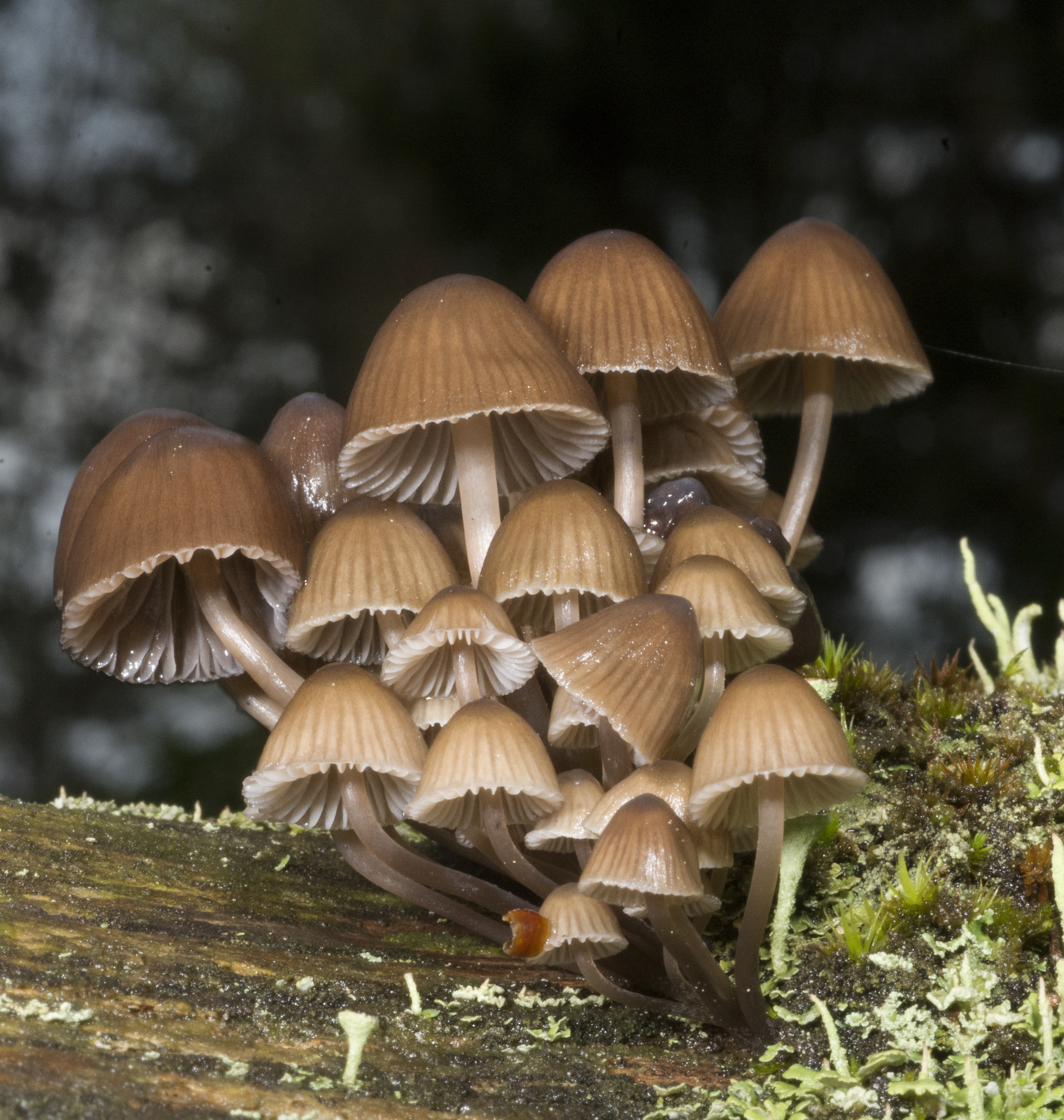Mycena silvae-nigrae
Mycena silvae-nigrae
Description
1. Cheilocystidia, 2. Basidium, 3. Spores, 4. Hypha of the cortical layer of the stem with terminal cell.
Cap 10-45 mm across, acutely to broadly conical, becoming plano-convex to applanate, often with an umbo, sulcate, translucent-striate, often conspicuously white-pruinose, glabrescent, not lubricous when wet, almost black-brown when young, then dark sepia brown, paler with age, margin paler. Gills 15-30 reaching the stem, adnexed to adnate, sometimes becoming veined and dorsally intervenose, whitish to grey. Stem 30-140 x 2-3 mm, cylindrical, equal, pruinose, glabrescent except for the apex, apically dark steel blue in very young specimens, gradually fading, becoming entirely dark brown or with a whitish apex, the base covered with coarse, whitish fibrils, not infrequently deeply rooting in decayed wood. Odour pronouncedly nitrous. Basidia 28-41 x 7-11.5 µm, slenderly clavate, 2-spored. Spores 9-15(-17.5) x 7-10(-11) µm, Q = 1.4-1.7, Qav ˜1.5, broadly pip-shaped, amyloid. Cheilocystidia 20-73 x 7-19 µm, forming a sterile band, clavate, lageniform, fusiform or somewhat irregularly shaped, apically narrowed into a simple or furcate neck, or covered with several coarse excrescences. Pleurocystidia scattered, fusiform. Lamellar trama dextrinoid. Hyphae of the pileipellis 2-5.5 µm wide, more or less densely covered with simple to branched excrescences 2-20 x 2-2.5 µm. Hyphae of the cortical layer of the stem 2-4 µm wide, somewhat gelatinized, covered with excrescences 2- 4 µm long, terminal cells up to 4.5 µm wide, diverticulate. Clamps absent.
Ecology and distribution
Solitary to subcespitose on dead coniferous wood, particularly on much decayed Picea stumps, but also among tall mosses or Sphagnum on woody debris. Also found on fallen, buried cones of Picea. Ocurring in the spring, from ultimo April to the middle of June; mostly found in May. A common species in south-east Norway; found north to Trøndelag.



